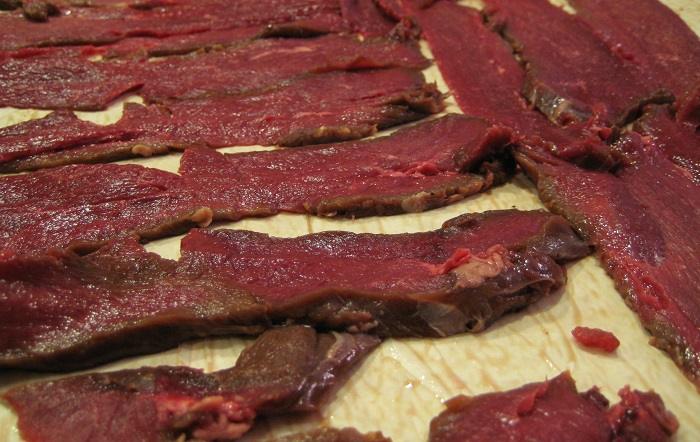Have you ever found yourself looking for something in the freezer, and then stumbled upon a couple of packages of venison that somehow lost their way? This happened to me several months ago and I couldn’t have been happier. Why did the notion of being reunited with some venison make me happy? One word: jerky.
Making jerky is one of those time-honored traditions that my family just loves. It is an extremely lean and healthy snack for everyone. I love it because instead of eating processed garbage, my kids are eating a snack high in protein and not simply refined sugar. I love jerky because it is the perfect reason for me to sharpen my favorite knife and fire up the smoker.
Restore Your Old Blades To A Razor’s Edge In Just Seconds!
I have a very simple recipe for making jerky, and it works for both venison and beef. I have never tried it with other meats, although I cannot imagine the process would be dramatically different. What follows is a very basic process for making jerky using an electric smoker. I prefer to use mesquite when smoking meats like venison and beef, but the choice is totally yours.
Ingredients
- 2 pounds venison
- ½ cup soy sauce
- 1/4 cup Worchester sauce
- ½ teaspoon Morton Tender Quick Cure
- 1 teaspoon chili powder
- 1 tablespoon garlic powder
- 1 tablespoon onion powder
- 2 tablespoons rough cracked pepper
The Process
You want to begin working with this stuff the night before you intend to fire up the smoker. Make sure your venison is trimmed of any fat or sinew and is sliced thin. The thinner the better here, since it will help it to dry out easier and will provide more surface area for the marinade to adhere. Make your goal for strips around ¼-inch thick or so. It might be helpful when cutting the meat to have it be not quite frozen, but a bit stiff. This will give you a little more control as you are slicing it. Also, take a couple of minutes and sharpen your knife before you get going. A sharp knife will make this job a lot easier.
Once you have the meat sliced, just put it aside and focus on the marinade. Put all of the ingredients except the cracked pepper in a plastic storage bag and make sure it is mixed thoroughly. Once this is done, add the venison and place it in the refrigerator overnight.
The next day, you want to get your smoker going low. Try to hit somewhere between 150-175 degrees Fahrenheit. Next, take the marinated venison out of the fridge and drain the marinade. Spray the racks of your smoker with cooking spray and begin laying out the venison strips. The last thing you want at this step is to have the strips touching each other in any way, so space accordingly. Before you place the jerky in the smoker, liberally sprinkle them with the cracked black pepper.
The time it will take your smoker to successfully turn that wonderful venison into tremendous jerky can vary. Expect it to take anywhere from 5-6 hours depending on the size of the slices and the temperature of the smoker. If you are nervous about the jerky after it comes out of the smoker, you can always finish it in the oven at 200 degrees for an additional 10-15 minutes or so. You will know the jerky is done when you can bend a piece and it begins to splinter. If the jerky snaps when you bend it, it is too far gone, although will still be delicious. Once it is done, put the jerky in a glass jar or vacuum seal it for storage.
If you use the cure, it will last you months and months, making it useful out in the wild or just for storage as a survival food. Without the cure, I would recommend refrigeration and prompt eating to avoid any mold growth. However, if your family is like mine, then you will never be able to find out just how long it can truly last, because it will be gone the second you turn your back.
What jerky-making advice would you add? Share your tips in the section below:
Learn How To ‘Live Off The Land’ With Just Your Gun. Read More Here.
 Off The Grid News Better Ideas For Off The Grid Living
Off The Grid News Better Ideas For Off The Grid Living






